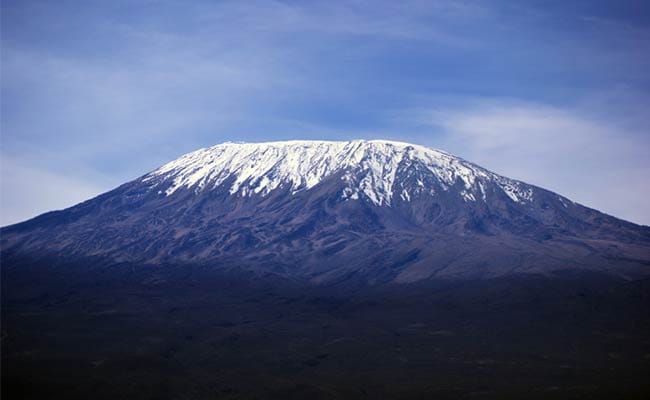
WMO said glacier and ice sheet loss and rise in sea level were unprecedented during this decade. (File)
New Delhi:
The glaciers on Mount Kilimanjaro, the highest peak in Africa, are projected to be wiped out by 2040, said a global weather body, underlining how climate change is driving extreme events across the world.
World Meteorological Organization (WMO) has termed the 2011-2020 period as the warmest decade on record for both land and ocean. Glacier and ice sheet loss and the rise in sea level were unprecedented during this decade, it said.
“Continued rising concentrations of greenhouse gases fuelled record land and ocean temperatures and turbo-charged a dramatic acceleration in ice melt and sea level rise,” WMO said citing its new report.
Glaciers thinned by an unprecedented 1 meter every year and this may lead to long-term water concerns for millions of people, said the WMO, adding that nearly all 19 primary glacier regions have seen rising negative values during 2000-2020.
“The Antarctic continental ice sheet lost nearly 75% more ice between 2011-2020 than it did in 2001-2010 – an ominous development for future sea level rise which will jeopardize the existence of low-lying coastal regions and states,” said the global body.
The report also indicated a rise in the atmospheric concentration of the three major greenhouse gases over the decade. The rates of ocean warming and acidification too have been on the rise, threatening the marine ecosystems.
The WMO also raised concerns over a rise in the global mean sea level due to ocean warming and loss of land ice mass. Greenland and Antarctica lost 38 per cent ice during 2011-2020 than during the previous decade, it said.
The ice extent in Arctic sea continues to decline with the seasonal mean minimum being 30% below average, said the WMO.
The only silver lining was that the Antarctic ozone hole was smaller in 2011-2020 as compared to the previous two decades. WMO said this indicates the success of the Montreal Protocol, which was adopted in 1987 to tackle the depletion of the Ozone layer.
However, climate change remains a real threat.
“Each decade since the 1990s has been warmer than the previous one and we see no immediate sign of this trend reversing. More countries reported record high temperatures than in any other decade. Our ocean is warming faster and faster and the rate of sea level rise has nearly doubled in less than a generation. We are losing the race to save our melting glaciers and ice sheets,” said WMO Secretary-General Petteri Taalas.




